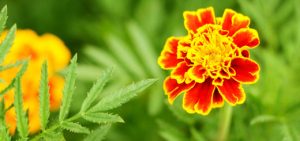RHS Level 2 R2101 February 2011: Plant Classification, Structure and Function
Question 1: List FIVE differences between gymnosperms and angiosperms by completing the table below (10 marks)
Differences you could have mentioned here include:
Angiosperms, vs. Gymnosperms
1.flowers, seed in ovary, producing fruit vs. cones, naked seed
2.Many insect-pollinated vs. usually wind-pollinated
3.Evergreen or deciduous vs. mostly evergreen
4.Non-resinous vs. resinous
5.Occur in a wide variety of habitats, and as annuals, biennials, ephemerals, and perennials vs. many in dry habitats, and mostly woody perennials
6.improved transport tissues in angiosperms (e.g. xylem with vessel elements in angiosperms vs. simplified xylem tracheids in gymnosperms.)
7.angiosperms have ‘double fertilization’, while gymnosperms do not.
The RHS examiners note that:
“Candidates who showed a detailed knowledge of the differences between gymnosperms and angiosperms and were able to compare specific aspects side by side in the table gained higher marks. Good examples given included; Gymnosperms: exposed seed in cones versus Angiosperms: enclosed seed producing fruit or Gymnosperms: mainly woody perennials versus Angiosperms:woody and herbaceous annuals, biennials and perennials.
Unfortunately, a number of candidates misread gymnosperms and angiosperms for monocotyledons and dicotyledons.”
Background notes:
The angiosperms are the flowering plants and are by far the largest phylum of plants. The male and female organs are borne on highly modified shoots called flowers. These are often adapted to make the plant more conspicuous to animals, which are needed to convey pollen grains from male to female organs. The seeds develop within the protection of an ovary, which develops into a fruit.
The angiosperms can be divided into two classes: the monocotyledons (which have one embryonic leaf and flower parts and usually in threes or multiples of three) and the dicotyledons (which have two embryonic leaves and their flower parts are usually in fours or fives).
Gymnosperms are seed-bearing plants that lack the combination of specialized features that characterize the flowering plants. The name gymnosperm means naked seed; that is, the seeds are not enclosed within fruits.
So gymnosperms are all fruitless seed plants. They are made up of a heterogeneous group of plants characterized by the production of naked seeds. Estimates form fossil records indicate that gymnosperms must have evolved approximately 300 million years ago from non-seed producing ancestors, which were fern-like in appearance.
Double fertilization: This process is unique to angiosperms. (You do not need to know about double fertilization in depth for the Level 2 exam.) A single pollen grain has 2 sperm. A single ovary has an egg cell and a central nucleate cell. Double fertilization occurs when 1 of these sperm combines with the egg to become the embryo, and the other sperm combines with the central nuclei to become the endosperm of the growing seed.
Click for a really nice short animation on Double Fertilisation.

